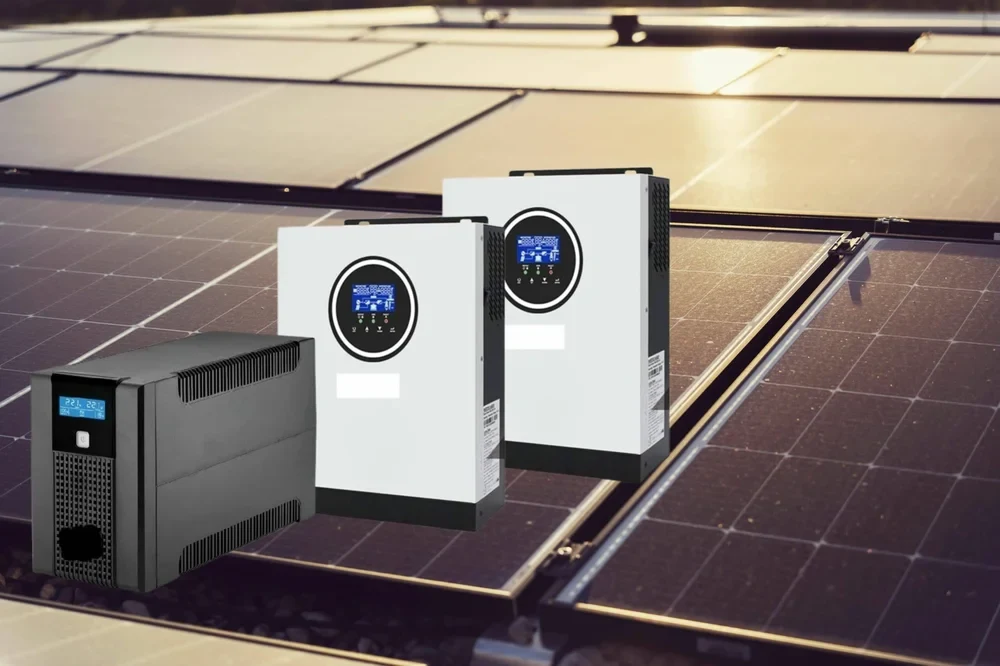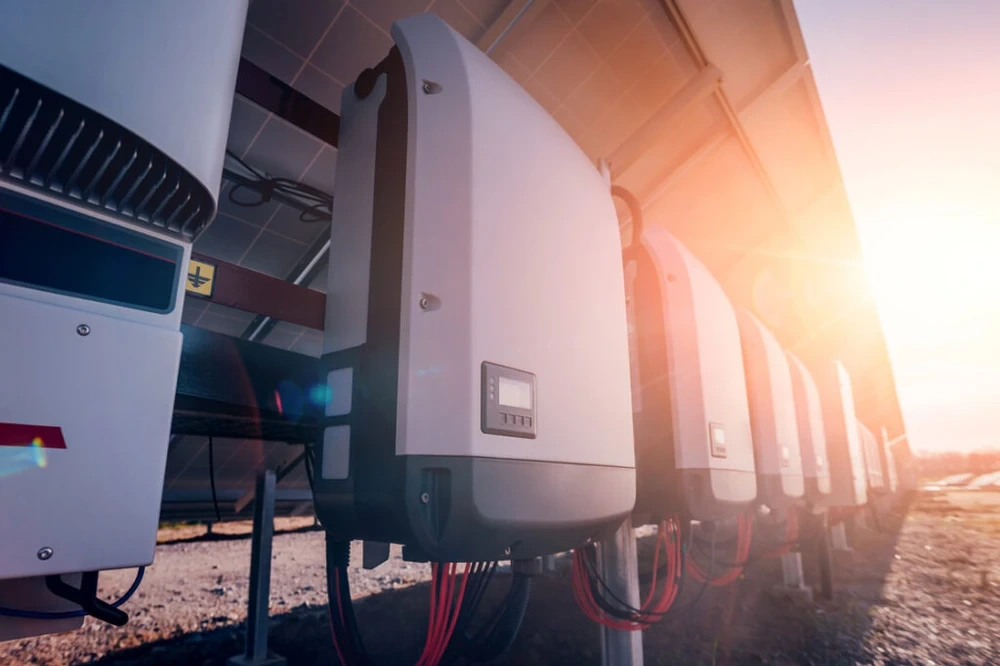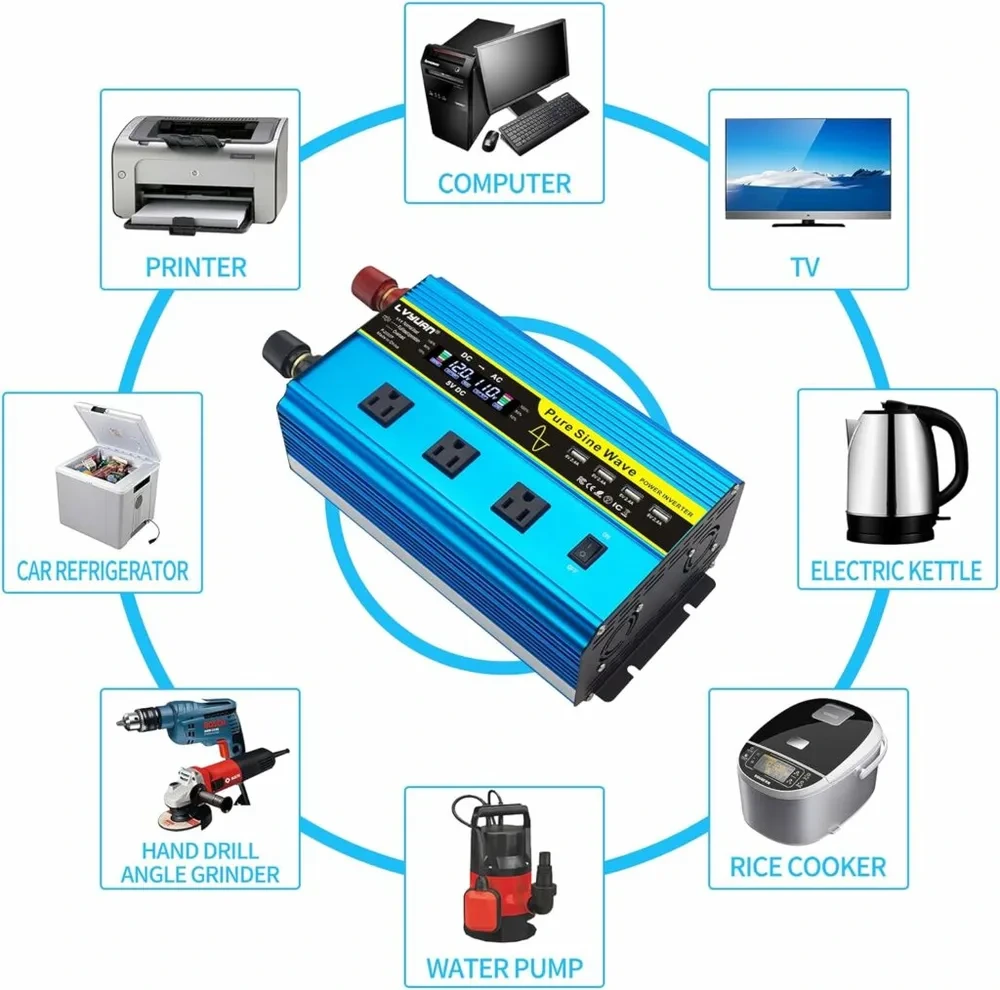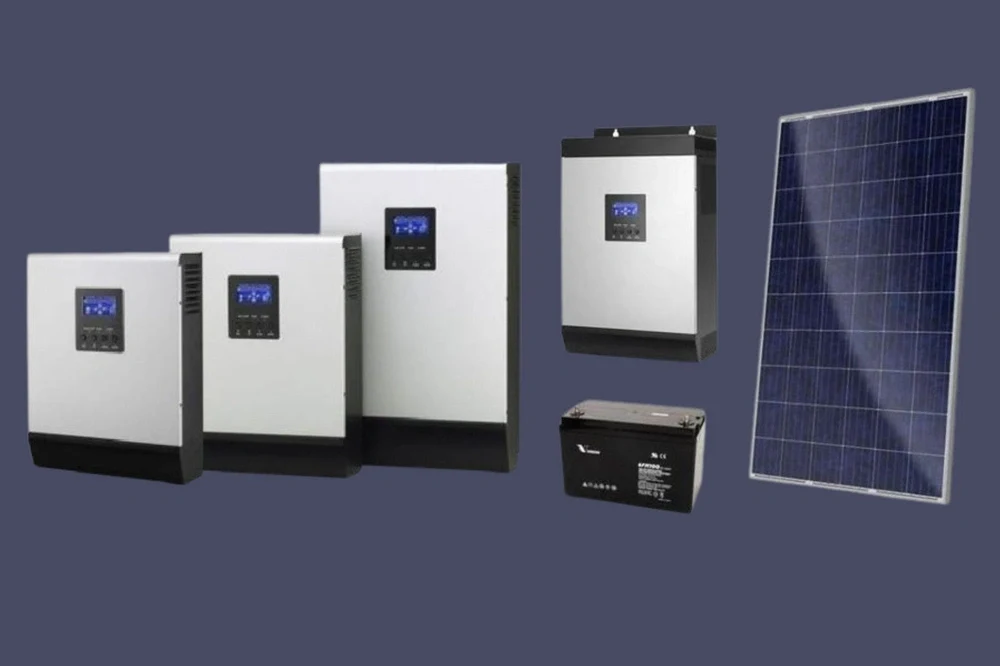There are a few factors to consider when purchasing an inverter for home use, including the power output, battery capacity, and whether it can handle load-shedding in times of power outages.
A key feature of modern inverters that would be practical for your property is the ability to harness solar energy. This provides a sustainable and economical power solution, making full use of the sun’s energy.
Hybrid inverters are another technologically advanced option that incorporates both traditional and renewable energy sources for maximum efficiency.
The capacity of the UPS inverter is another important factor to consider, as it determines the amount of power output that can be sustained. With options ranging from 850VA to 1600VA, one can choose a UPS home inverter suitable for their specific needs.
Understanding UPS Inverters for Home

The inverter plays a crucial role in converting the power from solar panels into usable sine wave energy. The battery’s capacity is what determines the range and duration of backup power supply during load shedding or power outages.
In terms of output, pure sine wave inverters are considered the gold standard. They generate a smooth, sinusoidal waveform, copying the pattern of the power supplied via the grid.
These inverters supply power to your electronic devices in a ‘clean’ and ‘gentle’ manner, reducing the risk of damaging sensitive devices.
When selecting a UPS inverter for home use, the size of your installation also matters. The power you require varies according to the device you plan to use. For instance, the power requirement of a home computer is dramatically different from an entire house. Understanding your power needs will facilitate the choice of the correct inverter size, and ultimately, the choice of the optimal lithium battery range for your solar system to securely charge and deliver a pure sine wave.
Basics of Power Backup: UPS and Inverter
UPS inverters offer the ability to harness solar power to keep your home running smoothly during extended periods of load shedding; this includes the feature of a pure sine wave inverter for maximum output and efficient solar charging. These hybrid inverters not only feature an in-built solar charge controller but also a longer lifespan, thanks to the use of lithium batteries, known for their excellent cycle life and energy density.
As for UPS, more sophisticated versions designed for home use offer a more intelligent power management solution.
For instance, they can automatically switch to battery power when the input power source or voltage fluctuates beyond a safe range.
Other impressive features include automatic voltage regulation, cold start function, and the use of gel batteries, known for their maintenance-free operation and deep discharge recovery. In terms of capacity, there’s a broad spectrum, from low-power devices such as 850VA to high-power ones reaching up to 1600VA. The choice of UPS or inverter depends on your load requirements, considering aspects such as the max output, the need for a pure sine wave or sinusoidal waveform power card, the benefits of max solar charging, and the reliability of different brands and features including the use of gel batteries.
Hybrid UPS and Inverter Systems

The hybrid UPS home system not only functions as a backup power source during power outages, but it also provides a continuous power supply by harnessing solar energy from installed solar panels. This practical functionality makes it an ideal solution for mitigating the adverse effects of load shedding.
A prominent feature of these hybrid systems is their efficiency in managing power consumption. By prioritizing solar power over battery power, they ensure a longer lifespan for the battery, thus reducing the overall operating costs.
These systems can operate at maximum efficiency, ensuring a pure sine wave output, which is considered the highest quality of electrical output. The hybrid UPS and inverter systems also come equipped with state-of-the-art technology.
They have a wide voltage input range, providing adaptability to varying power conditions. Furthermore, they include the feature of intelligent solar charging, which promotes the effective use of the hybrid 24v system, ensuring optimal performance and longer life for the inverter at home.
Solar and Lithium Battery in Inverters
Devices that utilize lithium batteries can provide power directly from solar panels or battery storage, affording flexibility in power generation and consumption. This can be an energy-efficient solution for powering up items such as your shed or for downloading additional information on an inverter system.
Inverters used in these hybrid systems come with features such as maximum solar charging and power output regulation. This ensures efficient utilization of solar energy, reducing energy waste and, in turn, cutting down on energy costs.
In terms of capacity, the size of the inverter for a home largely depends on the total power consumption and overall energy needs. Higher power demands will require larger inverters and more advanced systems, such as 24v or even 48v systems.
Inverter brands can offer various options to cater to different power needs, like 850va, 1450va, and 1600va. These options ensure that you can find the right equipment for your specific home or office requirements.
Another important factor to consider is the energy expenditure required for the download and storage of additional information on your lithium battery-powered inverter.
Key Points Regarding Hybrid Systems and Inverters
- Devices using lithium batteries can directly receive power from solar panels or battery storage, enhancing flexibility in power generation and consumption.
- Inverters in these systems have features like maximum solar charging and power output regulation, which ensures efficient use of solar energy and reduces energy costs.
- The size of the inverter for a home is determined by the total power consumption and overall energy needs. Higher power demands necessitate larger inverters and more advanced systems.
- Inverter brands provide a range of options, such as 850va, 1450va, and 1600va, to meet different power needs, ensuring suitable equipment for specific home or office requirements.
Decoding Pure Sine Wave Inverters

The power output of Pure Sine Wave inverters is cleaner and more stable. This makes it more efficient for solar panels and lithium battery systems to convert DC power to AC, making them a preferred choice in hybrid and 12v renewable energy systems. These inverters, often the backbone of a hybrid solar power system, possess a crucial role in transforming the 12v direct current (DC) harnessed from solar panels or stored in a lithium battery into a usable form of alternating current (AC) power.
This transformation follows a certain waveform, termed a ‘sine wave’, with pure sine wave inverters yielding an output that flawlessly mirrors the waveform of our primary power grid.
This sophisticated technology positions pure sine wave inverters as the finest choice for powering sensitive electronics without any potential damage or performance deficits.
With a wide variety of brands available, choosing the right inverter for your needs has never been easier
Load Shedding Solutions: UPS Inverters for Homes
Inverters allow for power generation from both solar panels and the electrical grid, providing a hybrid solution that can offer a continuous source of 24V power. This makes it an ideal backup power option for homes and offices alike. This flexibility makes it an even more appealing option for those who live in areas prone to power outages.
By harnessing and storing solar energy, they can provide power during the day and have stored energy for night use or during blackouts.
On the other hand, solar inverters, true to their name, primarily utilize solar energy. They capture energy from the sun, converting it into usable power, which can substantially reduce dependence on the grid and cut down on energy costs.
Lithium battery inverters are known for their durability and long lifespan. These inverters use lithium batteries as a power storage solution. Notably, lithium batteries can undergo numerous charge-discharge cycles without significantly degrading, which translates to a longer operating life for your inverter. The decision-making process doesn’t end with choosing the type of inverter for the home, as factors like whether to use a pure sine wave or a hybrid inverter, or whether to opt for a 24v system or a lithium battery as backup power, all play a crucial role in determining the best solution for your ups home device.
Inverters
- Inverters can generate power from both solar panels and the electrical grid, providing a continuous source of 24V power and making them an ideal backup power option for homes.
- Solar inverters primarily utilize solar energy, capturing energy from the sun and converting it into usable power, which can significantly reduce dependence on the grid and lower energy costs.
- Lithium battery inverters are known for their durability and long lifespan. They use lithium batteries as a power storage solution, which can undergo numerous charge-discharge cycles without significant degradation.
- Choosing the type of inverter for home involves considering various factors such as whether to use a pure sine wave or a hybrid inverter, or whether to opt for a 24v system or a lithium battery as backup power.
Top Brands in UPS Inverters

Many companies have taken an eco-friendly route, focusing on solar-based inverters that incorporate a system of max energy voltage range. This significantly reduces the need for lead acid-based power sources and the frequency of load-shedding during peak electrical usage periods. With an efficient max solar charging capacity, these advanced systems prioritize the use of renewable solar energy, reducing the consumption of non-renewable resources.
They provide a harmonious blend of energy efficiency and power resilience. The lithium battery has also gained popularity among certain brands.
Recognized for its exceptional lifecycle and high energy density, the lithium battery is emerging as a preferred choice for UPS inverters. These systems also feature a pure sine wave output, ensuring a smooth and stable energy flow to connected devices.
Hybrid inverters also claim their spot in the market, bridging the gap between traditional and renewable energy sources. Their key feature is to intelligently shift between solar, battery, and grid power as per availability, making them a practical solution for comprehensive power backup. Exclusivity also extends to the device’s electrical system, which sports a proprietary lead-acid battery for optimal energy usage.
Features and Specifications of Home Inverters
The ability to install features such as a 48v battery voltage or a sinusoidal waveform power card, is also an important part of a home inverter’s appeal.
Some units come with pure sine wave output, ensuring higher efficiency and smoother functioning of the connected devices. Others might include a max solar charging feature, beneficial for homes with solar panels, which maximizes the use of available solar energy for charging.
There are hybrid inverters that can switch between power sources such as solar, battery, and grid power, depending on the availability. Certain inverters are equipped with a lithium battery, which often has a longer lifespan and better cycle efficiency compared to traditional lead acid or gel batteries.
Backup power is another critical feature for many homeowners. In the event of a power outage or load-shedding, having a reliable inverter can ensure a seamless power supply. Brands with a wide range of power capacities and features can cater to varying consumer demands. Understanding the specifications and features of different home inverters, such as the 1450va with 2 x 48v battery voltage or the 850va with 1 x battery voltage, allows users to select the appropriate device to install based on their needs.
Installation Guide for UPS Inverters
Embarking on a DIY project to install UPS inverters can be both rewarding and financially savvy, especially when you choose an intelligent plug-and-play model. Understanding the essential features to consider and the necessary tools for the task can lead to a successful self-installation.
In this regard, many opt for ‘plug and play’ inverters, such as Mecer, due to their user-friendly design, which increases the success rate of installations by both professionals and beginners.
Grasping technical terms such as wattage, capacity, and sinusoidal waveform can also significantly improve your installation experience, ensuring a secure setup.
Energy Efficiency: Reduced Power Consumption with Inverters

A top unit, such as AC 1600, offers deep cycle batteries perfect for teaming up with solar panels. This combination makes it an ideal choice for a sustainable and efficient power source. The addition of a sine wave, pure or sinusoidal, yields a smoother and more stable output, enhancing the performance of the inverter.
This feature also has a significant impact on the longevity of appliances, as it prevents damage due to power fluctuations. Apart from their energy-saving benefits, inverters also provide a solution to frequent power blackouts, ensuring constant power backup. This aids in maintaining a steady supply of power to essential home appliances, even during periods of load shedding.
One of the key considerations while investing in a power inverter is its range. A wide range of voltage flexibility allows the inverter to work efficiently in fluctuating power conditions. This capability is especially useful in areas prone to frequent power cuts or voltage changes. Furthermore, some brand-specific solar panels can produce a PV output of up to 1600W, with a frequency that can power everything from your AC to deep cycle and gel batteries in your shed.
Key Features and Benefits of AC 1600 Power Inverters
- AC 1600 brand offers deep cycle batteries that are ideal for sustainable power sources, especially when used with solar panels.
- The incorporation of a sine wave (pure or sinusoidal) in the inverter enhances its performance by providing a smoother and more stable output. This feature also extends the lifespan of appliances by preventing damage from power fluctuations.
- Power inverters provide an effective solution to frequent power outages by ensuring a constant power backup, thus maintaining a steady supply of power to essential home appliances even during load shedding.
- AC 1600 inverters have a wide range of voltage flexibility, enabling them to work efficiently in fluctuating power conditions. This is particularly useful in areas prone to frequent power cuts or voltage changes.
Deciphering Additional Information on UPS Inverters

When it comes to hybrid models, the integration of MPPT and PWM controllers can considerably reduce consumption, extending battery life beyond a year. These combine the benefits of both solar energy and conventional electrical supply, acting as a reliable backup power solution, especially during load-shedding.
Speaking about functionality, the power output of inverters can range from 850VA to 1600VA, giving consumers a wide array of options to choose from as per their power consumption needs. Some inverters even offer an option to install additional batteries to increase backup power.
The contemporary inverter is also an impressive blend of technology and convenience. For example, Mecer inverters are equipped with the ‘plug and play’ feature which makes them extremely easy to install and use.
Further, the communication feature offered by certain brands ensures system-wide compatibility and simplifies the monitoring process. With a robust design, excellent features, and intelligent mechanisms, UPS inverters continue to evolve. They offer consumers a reliable way to reduce consumption and extend battery life with their advanced MPPT and PWM controller systems.
UPS Inverters: An Energy Solution for Every Home
Combine the benefits of both regular and solar inverters to extend the lifespan of your home appliances. This move also potentially increases the export of excess energy back to the grid for additional savings. They can even harness energy from both the grid and solar panels, significantly reducing your dependence on non-renewable energy.
These inverters come in diverse capacities, from 850VA to as high as 1600VA
Therefore, whether you need power backup for a single appliance or multiple devices, there’s an inverter that’s tailored to meet your requirements.
They also feature intelligent charging capabilities and can accommodate a spectrum of battery types – including but not limited to lead-acid, lithium, and gel batteries. Most of these inverters come with a plug-and-play feature, making installation a breeze.
With a communication power card, monitoring your power usage and management becomes a lot easier. The sinusoidal wave-form output ensures your appliances are secured from power fluctuations, maintaining their lifespan and efficiency. Ultimately, the appliance has a lifespan of 80 years, with additional information available for download from our outlet’s website.
Key Features and Benefits of Solar Inverters
- They combine the benefits of regular and solar inverters, potentially increasing the export of excess energy back to the grid for savings and extending the lifespan of home appliances.
- They can draw energy from both the grid and solar panels, significantly reducing dependence on non-renewable energy.
- They come in diverse capacities, from 850VA to as high as 1600, and can accommodate a range of battery types, ensuring there’s an inverter to meet any power backup requirements.
- They feature intelligent charging capabilities, plug-and-play installation, and a communication power card for easy power usage monitoring and management.




